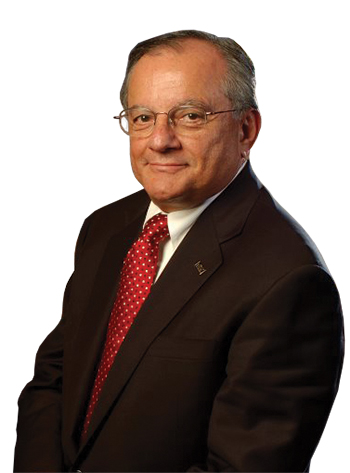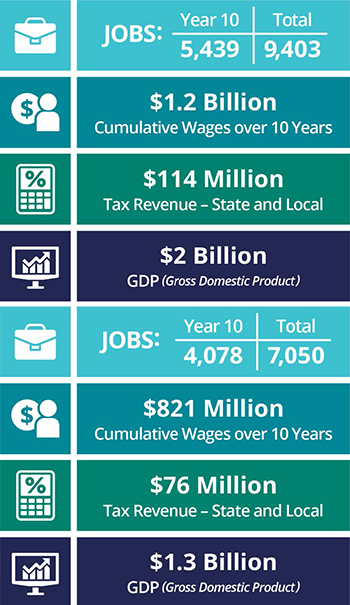The costs of poor population health — including diabetes, obesity and other conditions — can negatively influence economic development and workforce outcomes. But in Mississippi, these costs are sparking action and even new real estate development.
Among his other titles, Joseph C. Canizaro is the founder, president and CEO of Columbus Properties; a trustee and former chairman of the Urban Land Institute; and a founder and co-chairman of the Committee for a Better New Orleans, where among his crowning achievements is the Canal Place development. In an interview, he says his company’s Medical City at Tradition development near his hometown of Biloxi was driven precisely by his home state’s perennial low rankings, specifically in diabetes prevalence. The request for his involvement came straight from Mississippi Governor Phil Bryant.

“I’m here to help the quality of life of all of our people, and if we can cure diabetes, we’ll help millions if not hundreds of millions.”
"His mother died from it, and I have Type 2," Canizaro says. "Health care has always been an interest of mine."
The Tradition development started when Canizaro bought a large parcel with the sole motivation of giving back to his home state in the form of a retail shopping destination. Now, as new medical and nursing schools and other amenities open up, it’s gradually becoming a place where people can shop for better health.
"I’m here to help the quality of life of all of our people," says the native Mississippian whose grandfather landed in Vicksburg, "and if we can cure diabetes, we’ll help millions if not hundreds of millions."
Cluster in Progress
Years in the making, the development includes the 650-acre Tradition Town Center and is strategically located 10 minutes north of Biloxi, Gulfport and Interstate 10, at the intersection of major four-lane Highways 67 and 605 in the Gulf Coast’s growth corridor. The overall project moved slowly for a while (the land purchase having taken place just before Hurricane Katrina in 2005). But recent months have seen the pace pick up dramatically.
The Bryant Center School of Nursing & Simulation Lab opened at Mississippi Gulf Coast Community College in June 2018 with 800 nursing students and 27 jobs at a 50,000-sq.-ft. facility. The School of Pharmacy at William Carey University has 192 students and has created 34 new jobs. In 2017, Gov. Bryant announced that the U.S. Department of the Treasury had issued a $1-million grant award for accreditation support for the William Carey University School of Pharmacy. The award is part of the RESTORE program, established after the BP oil spill and overseen by the Department of Environmental Quality.
A recent study by Arduin, Laffer, and Moore Econometrics, the University of Southern Mississippi and Southern Mississippi Planning and Development District forecasts the economic impact of several known future developments in the master-planned community, including the National Diabetes and Obesity Research Institute (NDORI) affiliated with Cleveland Clinic, Gulfport Memorial Clinic, and Coastal Family Health Clinic (CFHC).
Digging into the data and using the successful master-planned development of Lake Nona in Florida as a model, they found that projects already underway have resulted in more than $110 million invested, another $148 million in additional economic impact, $101 million in wages and the creation of more than 2,700 jobs.
"Two obvious areas to stem from the knowledge concentration would be a focus on the biopharma and medical device industries," the authors of the study wrote, noting the ideal fit between the WCU School of Pharmacy, the planned facilities at NDORI and the intensive medical device and insulin needs of diabetes patients. "The potential for innovation and overall impact that could result from the specialization of the area is extremely high," they wrote. "The potential for spin-off industries is high because of the many ways to approach the fight against diabetes. Not only will the Medical City possibly attract pharmaceutical and medical device companies, but there are possibilities for new diabetes focused culinary programs or lifestyle products that help patients cope with the disease to come to the area as well."
Ryan Lopiccolo, executive vice president of Columbus Properties and Joe Canizaro’s grandson says those lifestyle aspects indeed point to medical tourism potential down the road at the 4,000-acre location adjacent to the DeSoto National Forest.
"Yes, we’re working on having people come here to get healthy, get well, and maybe even stay," he says. One aspect is a 922-acre parcel being developed into an active adult community — one more focused on healthy lifestyles than on mid-afternoon happy hours.
Potential Economic Impact of Tradition Medical City:

Lopiccolo says the support from Governor Bryant, the Mississippi Development Authority and county and city governments has been tremendous.
"The community has really gotten behind us. In fact, we are looking to raise a bit of money for some of these special projects from the state using some economic development funds, and the state’s economic developers have been fantastic, connecting us to companies like C-Spire, which will bring us gigabit internet, and getting the roads put in, including Tradition Parkway. It’s been a great relationship with state and local government."
All In
Lopiccolo says since Governor Bryant came to Canizaro and said, "Hey, I want off this list" of poor-health states, the momentum has really picked up, even if the challenge is daunting. "How do you cure diabetes with raw land?" he asks. "That gave us direction with Tradition and the Medical City." And that direction is getting the support it needs.
"At the governor’s summit on health care as an economic driver, we had leaders from a bunch of big companies in Mississippi say how much the health and well-being of their employees affects their productivity, costs and overall culture," he says, "and how big an issue it is. If we can turn that around — and there are lots of ways to do that — we can become an economic driver down here in the South, as well as make people healthier and happier."
The corporate support is evident in the names of the buildings: The pharmacy school building is named Sanderson Hall in honor of Joe Frank Sanderson Jr., CEO and chairman of the board at poultry giant Sanderson Farms. Scianna Hall is named for businessman and philanthropist Charles "Chuck" Scianna, a Gulf Coast native who is president and co-founder of Sim-Tex, a leading supplier of oil tubular goods to the oil and gas industry.
At full build-out, the 4,800-acre town will have more than 15,000 residential units, two million square feet of commercial development, and 35,000 residents. That sort of potential was part of the equation driving the economic impact study authors to a powerful conclusion that’s essentially the antidote to the $3.5 billion that obesity and diabetes are said to cost Mississippi annually.

